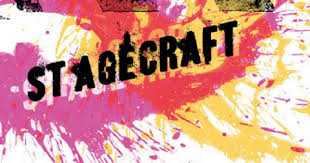When contemplating speaking in front of an audience we tend to focus on speech content and often forget to practice our stagecraft. Starting with the moment you step on that stage, your every movement will convey your confidence or your fear. Are you walking on stage filled with energy? Will there be an image on the screen or music playing in line with the theme of your speech? The audience is watching….You should be grabbing their attention as soon as you are introduced. Your opportunity to engage the audience starts the moment you step on that stage.
Resist the temptation to start speaking, instead, pause. Then look at the audience for a few moments before you start. Hold eye contact with a few people until you have the attention of the whole room. This gives everyone time to settle down and focus their attention on you.

Your opening should be powerful, consider starting with a quote, a story, or an unusual fact. Draw in the audience by using words like ‘you’ and ‘yours’. A question is often a good way to start. For example, “How many of you have experienced…?”, “If I told you _____, would you believe me?”. You only have a few seconds to engage your audience, they will decide very quickly whether they are going to listen to you or switch off from you. Using a strong opening will create interest and ensures the audience is focusing on you.
Keep your audience engaged through movement. Use 2 or 3 ‘anchor points’ on the stage as your progress through your speech. Anchoring your points allows you to refer back to them with a simple indication of your hand. This is particularly useful when using a timeline of past, present and future or referring to an earlier point. When you move on stage you connect more closely with different parts of the audience. However, you need to make movements with purpose. Walking around aimlessly will disengage and confuse your audience. When delivering your key message use the centre of the stage, close to the audience. This point of the stage is known as the power position. Moving on the stage is just one aspect of using body language.
Body language helps you to express points throughout your speech. The most common expressions of body language are gesturing and eye contact. When gesturing with your hands, make sure you are not holding anything – unless it’s to briefly demonstrate a point. Once you have finished making the point put down the item you were holding. Having empty hands helps you to gesture more naturally. Consider practising gestures in front of a mirror to minimise repetition but don’t orchestrate your gestures. They will look unnatural and only serve to distract your audience. When not gesturing, keep your hands by your side.
Eye contact helps you to connect with your audience. Use eye contact to look at their facial expressions and their reactions to what you’re saying. Use this feedback to confirm if your audience is engaged or if you need to adjust your delivery. Focus on one person at a time, it helps to create a one on one conversational style. It can reduce your nerves as we all have experienced one on one conversations, thus it will feel more natural to you. How long should you maintain eye contact? Just a few seconds; enough time to get through a short sentence. Often, the person will nod in response once they have processed your words.
If you are using presentation software, a flip-chart or a whiteboard, consider placing it on the left or right hand side of centre stage, rather than in the centre – the power position. Once you have made your point using these tools, be sure to move closer to the audience towards centre stage.
Stagecraft helps your audience visualise your message and interact with you. It maintains audience attention and interest, particularly when your speech is delivered with passion.
Keen to practice your stagecraft? Visit Picnic Point Toastmasters on the 1st and 3rd Tuesday of the month. We meet at 7pm at Club Picnic Point, 124 Lambeth St, Panania. Your audience awaits you…..
You must be logged in to post a comment.